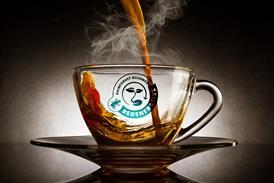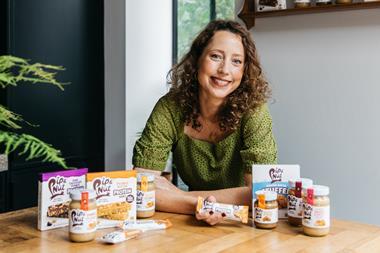In a market worth more than £1.6bn, this is a very significant upswing that vindicates all the investment in new product development and promotion that manufacturers have put into the category in the last year.
But like all mature markets, the picture is uneven. Fish, soup, and ready meals are the top performers and responsible for the market's strong growth. Vegetables and fruit continue to decline, losing out to the growing challenge of fresh and chilled alternatives.
Increases in raw material costs, particularly in fish, have played a part in the market's value rise. But, more important has been the role of innovation in generating interest and opening up new markets.
Canned food suffers from an old fashioned image and an ageing consumer profile, so in the last year manufacturers have been hotly pursuing a younger audience, developing products with more modern flavours and targeting new usage occasions.
There's also been renewed efforts to improve canned foods' quality perception with an increase in premium products. And, on the packaging front, ring pulls are rapidly becoming the norm in an attempt to improve the convenience aspect. Last Autumn, Baxters added them to all its soup range.
Fish is the market's star performer, with a growth of more than 12% that's pushed the sector to £359m (ACNielsen). Consumer acceptance is high, with nine out of 10 people buying canned fish, according to brand leader John West.
General marketing manager Jeremy Coles says brand values are extremely important in the purchasing decision, with consumers identifying strongly with John West. This has helped the company gain nearly a third of the total canned fish market, its leading products being red and pink salmon, tuna and sardines.
Tuna is the sector's driving force. "Its low fat healthy eating attributes make it the perfect food, and that's why it has seen such outstanding growth in the last few years," says Coles. Tuna is now the largest category in volume terms, with seven out of 10 people eating it. Steaks and chunks are the most popular format. Last year John West introduced single serve pouches and a foil packaged tuna meal to take tuna into the out of home eating market. "Added value tuna is growing at 25%," says Coles.
Princes made a similar development last year, but its main strength is in mackerel, a sector that's in double digit growth, according to marketing director Neil Brownbill. "Mackerel's oil rich health benefits are starting to get through to consumers," he says.
The company sees continued growth from promoting the health benefits of oily fish. Its latest initiative is a three-year fund-raising partnership with the British Heart Foundation which will highlight the importance of eating fish as part of a balanced diet. It is also launching 13 new oily fish lines, targeting a younger audience.
International Fish Canners is also reaping the benefits of mackerel's popularity, recently winning own label business from Tesco for its premium Scottish fillets and gaining wider distribution for its Scofish brand of canned salmon and mackerel.
Soup is the second biggest money spinner in canned goods. Premium brand leader Baxters says the £36m premium sector is leading category growth at 5% year on year. "Organic is doing especially well, up 30%, but from a small base," says brand manager Claire Quigley.
On the other hand, overall brand leader Heinz reckons growth is predominantly from standard, chunky and low calorie products. Last year it refreshed its traditional range with chicken & sweetcorn which the company says now has the second widest appeal of all its soups. It, too, reports growth in organics.
Other developments include expansion of its licensed pasta soup for children and its Weight Watchers brand. It has also taken soup out of the can and into pouches to target premium consumers and created a microwaveable format for the out of home market.
On the canned meals front it has attempted to reinvigorate the pasta meal category with Rigatoni and Fusilli, to fill a gap in the premium adult sector. Its existing canned pasta range has been revamped with new packaging and recipes. Marketing manager Teresa Ceballos says this was to reflect altering consumer trends'. It has also attempted to take its pasta meals and Baked Beans into the out of home market by putting them into microwaveable format.
Reinvigorating bean meals has been the focus of Premier International Foods' HP brand. It has paid off, for the sector has grown nearly 30% in the last year. One of Premier's most successful developments has been Omelette, Chips and Beans, a product that grabbed the nation's headlines because of its chips in a can technology. The brand is worth £1m, while the Wedgers meal range has become a £3m brand since launch last March.
The company is now revamping its HP bean meals with new labelling which will appear over the next few weeks and, this month, is moving into pasta meals with the Italian Job and Pizza Pasta, aimed at adults. It also plans to expand its children's pasta shapes with licensed character launches.
Hot and cold canned meat continues to have a chequered performance, but there has been innovation to improve quality and target new users.
Tulip marketing and category manager Keith Hardman says Stagg Chilli, its spicy chilli range launched in 1999, has grown nearly 70% in the past year growth. "The product and the packaging are of premium quality which is ensuring repeat sales. But growth is also down to strong marketing with TV commercials, store-led advertising and sampling," says Hardman.
Tulip's most recent development has been to give its Spam brand a modern twist with a strong dash of Tabasco chilli sauce. Spam Hot & Spicy is aimed at a younger consumer base, says Hardman, and it will be targeting students this year with Spam Glam club nights at university campuses.
Princes has scored a hit in the spicy arena with the spiced up version of its classic Corned Beef, which Brownbill says particularly appeals to young males. It is rolling out three premium steak recipe meals to raise perceptions of canned meals.
Ye Olde Oak has revitalised the canned hot dog sector in the last five years it saw 15% growth in 2001 with a range targeting specific consumer needs. Last year it introduced Chilli and Giant aimed at young, single males a previously untapped market and Mr Greedy Hot Dogs for children and families. "Segmenting the market in this way and providing consumers with something they really want has been very successful in driving growth," says marketing manager James Wareing. "Sales have also been boosted by McDonald's featuring our hot dogs as part of their new McChoice menu."
In the less vibrant areas of canned vegetables and fruit, Westler Foods is trying to turn its Chesswood Mushroom into the leading canned vegetable ready meals brand. It has introduced a number vegetable meals, including organic, and given them substantial consumer support.
On the fruit front, Del Monte has bucked the downward trend by achieving 6% growth in the last year through increased brand investment and product development targeted at the single serve/out of home market. Its offerings Fruitini desserts for children, and Fruit Express in a pot are doing well, according to head of marketing Rod Groundes-Peace.
{{FOCUS SPECIALS }}
Close menu
- Home
- Retail & Wholesale
-
Products & Suppliers
- Back to parent navigation item
- Products & Suppliers
-
Product Categories:
- Back to parent navigation item
- Product Categories:
- Alcoholic drinks
- Bakery
- Cereals & breakfast
- Cheese
- Chicken & poultry
- Chocolate
- Confectionery
- Crisps, nuts & snacks
- Dairy
- Fish
- Fresh produce
- Frozen
- Household
- Meat
- Own Label
- Sauces & condiments
- Seasonal
- Soft drinks
- Vaping
- Vegan & plant-based
- World foods
- Suppliers
- People
- Reports & Data
-
Topics A-Z
- Back to parent navigation item
- Topics A-Z
-
Popular topics:
- Back to parent navigation item
- Popular topics:
- Cost of living crisis
- Crime
- Deposit Return Schemes
- Finance
- Government & Regulation
- Health
- Inflation
- Loyalty
- Marketing
- Mergers & Acquisitions
- New Product Development
- Sourcing
- Supply chain
- Sustainability & environment
- Technology
- Ultra Processed Foods
- Vaping
- A-Z all topics
- Content by type:
- Events
- Ask iA (beta)
- Subscribe now
Sign in to comment on this article
Not logged in before? Register for FREE guest access today.
You will be able to:
- Read more stories
- Receive daily newsletters
- Comment on stories
Advert
















No comments yet